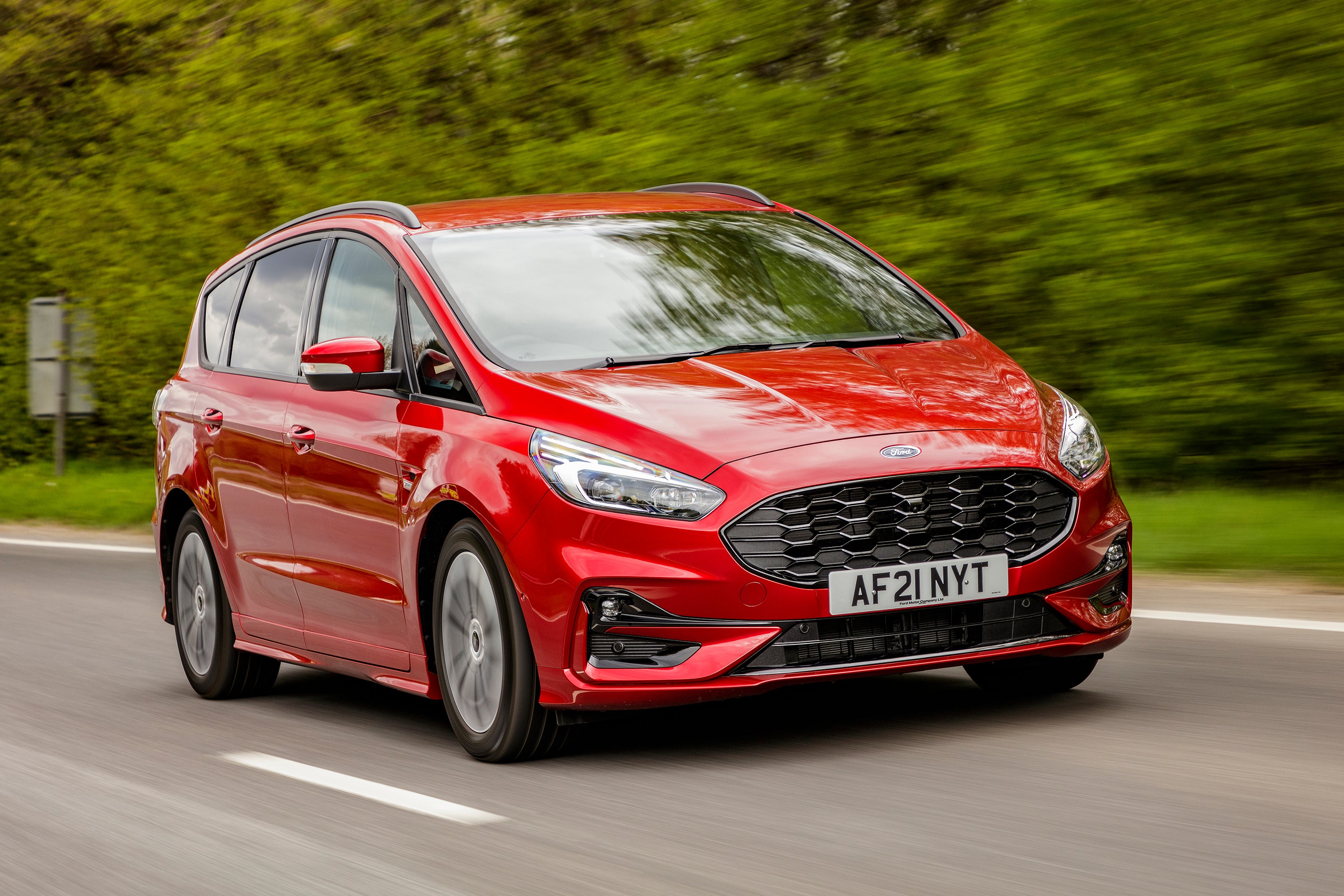Ford S-MAX (2015-2023) Review
Written by Andrew Brady
Quick overview
Pros
- Estate car levels of driving enjoyment
- Solid cabin that's well-equipped
- Practical and flexible seating layout
Cons
- Not as practical as the Ford Galaxy
- Less affordable than it once was
- You can now only buy the hybrid version new
Verdict: Is the Ford S-MAX a good car?
"The Ford S-MAX offered seven-seat MPV benefits with a more stylish suit, with the driving enjoyment of an estate car."
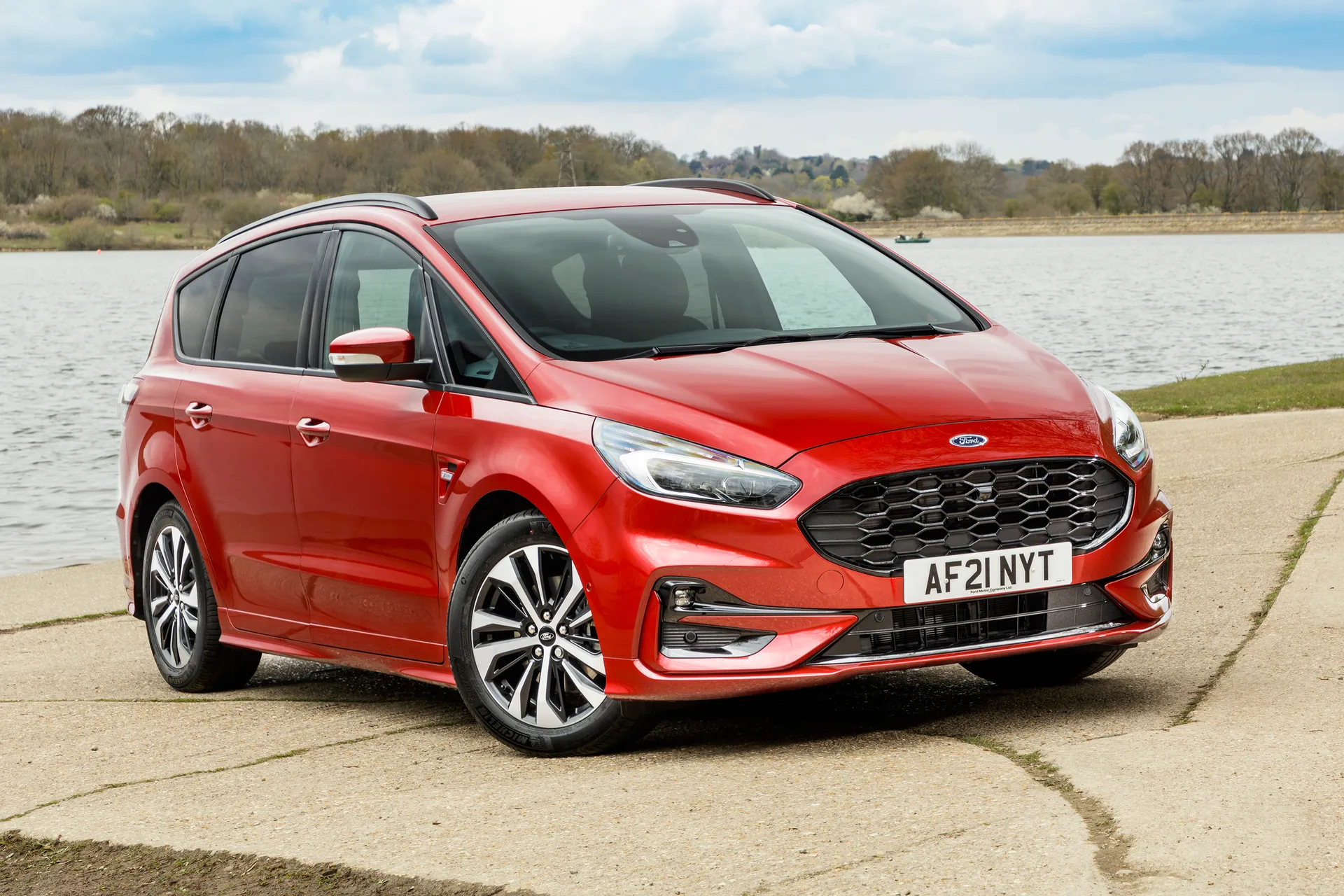
The Ford S-MAX was the seven-seat MPV you could buy when new with your head and your heart. Launched in 2015, the last S-MAX picked up where the old model left off, and injected style and dynamic ability into the space and practicality segment.
The S-MAX was sold alongside the seven-seat Ford Galaxy, but there were some fundamental differences between the two MPVs. While the Galaxy was a true seven-seater, the S-MAX was best described as a five-seater with two additional seats for occasional use.
Although the two cars looked very similar from the front, the S-MAX boasted a rakish, almost estate car-style roofline. Both cabins were similar, but the S-MAX was a bit more driver-focused. The range-topping Vignale version edged the Ford into premium territory, albeit with a price tag to match.
Older versions of the S-MAX were available with punchy but thirsty Ecoboost petrol engine, but they were dropped in 2019, leaving the S-MAX available with a single 2.0-litre EcoBlue diesel. There were two outputs available: 150PS and 190PS. The less powerful engine was more than up to the task of moving the S-MAX, even with all seven seats occupied. It was also available with a satisfying six-speed manual gearbox, while the 190PS model camee with an excellent eight-speed automatic transmission.
However, as of late 2021, it changed once again. The diesels were dropped entirely, replaced with a 2.5-litre full hybrid system taken out of the Mondeo.
The S-MAX was great to drive, even if the CVT-only hybrid wasn't as engaging as the old diesels. Although it lacked the precision of the original S-MAX, the later version was more comfortable and still a cut above rivals when it came to dynamic appeal. The low centre of gravity meant very little body roll when cornering for such a big car, while the lowered, stiffer suspension of the ST-Line model made the S-MAX feel like a nimble estate car.
Likewise, the S-MAX offered a huge 2,020 litres of luggage space with the five rear seats folded down, or 965 litres in five-seat mode. This shrunk to 285 litres in seven-seat mode, which was just enough for a suitcase and a couple of washbags.
The middle seats folded and slid independently to deliver maximum flexibility. Crucially, by moving them forward, you could create some extra room for the passengers in the third row.
Ford preloaded the S-MAX with generous standard equipment, so there's no need to look beyond the entry-level Zetec trim when buying used. If you do, the Titanium added a few nice-to-have features, the ST-Line was the sportiest member of the range, while the Vignale was the luxury wannabe.
Looking for a used car for sale? We've got 100s of Ford Approved Used Cars for Sale for you to choose from, including a wide range of Ford S-MAX models for sale.
Is the Ford S-MAX right for you?
If you’re after a practical and flexible used MPV, but don’t want to sacrifice driving pleasure, the Ford S-Max is the car for you. Although it didn't offer the space and practicality of the larger Galaxy, the S-MAX had more car-like styling and handling. Think of it as part-estate and part-MPV.
It seated seven, although the third row was best reserved for children, and it came with plenty of standard kit. Because it was based on the Ford Mondeo, it was good to drive. Indeed, we’d say it was one of the best-driving seven-seaters around of its time.
Although fashionable SUVs are popular among families, there's still a place for MPVs such as this, even if the market is dwindling. The S-MAX was hybrid-only in its last years, which narrowed its appeal, but there are plenty of used ICE versions on the market.
What’s the best Ford S-MAX model/engine to choose?
The 150PS version of the 2.0-litre EcoBlue diesel engine was and still is our pick. It offered the best blend of performance, economy and price, and was punchy enough, even with all seven seats occupied. The 190PS is a bit overkill.
Prior to 2019, there were also some Ecoboost pure petrol options: a 165PS 1.5-litre and 240PS 2.0-litre. Neither were particularly strong sellers, and neither delivered particularly good fuel economy. The bigger model, in particular, would struggle to top 30mpg unless you were really careful.
We’d also recommend the later entry-level Titanium trim level, as Ford loaded it with a fairly generous goodies.
What other cars are similar to the Ford S-MAX?
Because the Ford S-MAX straddled the estate car and MPV markets, it battled against a wide range of competitors. The more practical and larger Ford Galaxy was the enemy from within, but it couldn't rival the S-MAX' style and driving enjoyment.
Direct rivals included the Citroen Grand C4 Space Tourer and Volkswagen Touran, but they were the only car-based seven-seat MPVs on the new car market then. However, carmakers offered plenty of van-based MPVs, which included the Citroen Berlingo, Vauxhall Combo Life and Volkswagen Caddy Life.
Other used alternatives include the Volkswagen Sharan, SEAT Alhambra, Vauxhall Zafira Tourer and Renault Grand Scenic.
Newer seven-seat cars include the Skoda Kodiaq, Kia Sorento, and the Dacia Jogger.
Comfort and design: Ford S-MAX interior
"You wouldn’t describe the driving position as ‘low-slung’, but you certainly sat lower in the Ford S-MAX than many other similar MPVs. This helped cement the sporting aura when sat in the cabin, but it won’t suit those who prefer the commanding driving position of an SUV."
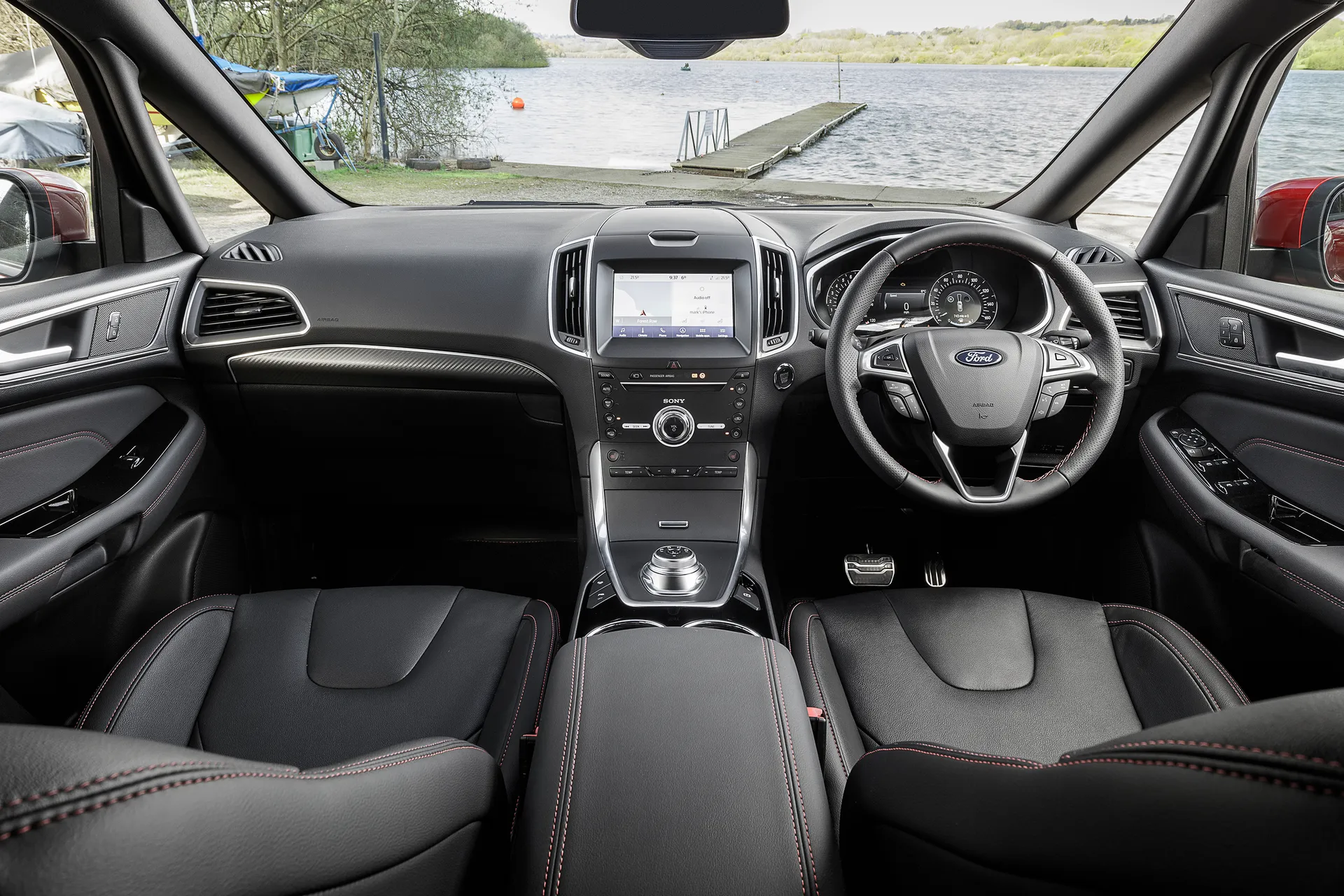
The driving position was excellent, however, with adjustable steering for height and reach. Even the driver’s seat in the entry-level version offered plenty of adjustment, but higher trim levels offered up to 10-way electric adjustment with lumbar support. All models got sport seats, which were comfortable and supportive.
The excellent driving position was enhanced further by a centre console with a fixed armrest (leather on the Vignale), along with the raised gear lever, which gave the S-MAX unlikely sporting qualities. Later automatic models received a neat dial in place of a chunky gearstick.
There was a pair of clear and concise dials in the Zetec model, but other versions had a 10.1-inch semi-digital cluster that could be configured in a number of different ways. The rest of the dashboard was fairly conventional, with a central screen flanked by a pair of air vents. The audio and heating controls were positioned in the lower half of the centre console.
The buttons were a little on the small side, but thankfully the console boasted a far simpler layout than even older S-MAX models. The flagship Vignale featured plush leather, climate controlled front seats with massage function, a leather-trimmed steering wheel and enhanced ambient lighting.
Quality and finish
The Ford S-MAX had an upmarket feel, especially when venturing beyond the used entry-level trim. Not that the Zetec was a poor relation – the cabin was solid, while the buttons and switches felt reassuringly expensive. Sure, there were cheap plastics in the lower reaches of the cabin, but you’d only come across these when vacuuming the carpets.
Upgrading to the Titanium didn't mean an upshift in quality and finish, but the ST-Line and Vignale offered a genuinely premium feel. Take the ST-Line, which featured a heated and perforated leather-trimmed steering wheel with red stitching, a leather-trimmed gear lever gaiter (also with red stitching), and heated sports seats with eight-way electric adjustment.
The flagship Vignale was designed to edge the Ford S-MAX deep into premium car territory. To this end, it came with perforated leather trim, climate-controlled front seats with 10-way electric adjustment and a massage function, a leather-trimmed instrument panel, active noise control, deep-pile carpets, Vignale tread plates and classy ambient lighting.
Unfortunately, the Vignale was too expensive when new, with a price tag that pitched it against posher rivals like the BMW 2 Series Gran Tourer. The S-MAX couldn't rival the BMW in quality, image or depreciation.
Infotainment: Touchscreen, USB, sat-nav and stereo in the Ford S-MAX
Every version of Ford S-MAX had an eight-inch colour touchscreen infotainment system as standard. The Sync 3 unit boasted a DAB digital radio, a CD player, eight speakers, voice control, two USB ports, Apple CarPlay and Android Auto.
Sync 3 was far better than Ford infotainment systems of old, offering faster response times and a menu system that was easy to operate on the move. That said, there were still too many menus, with some options requiring two or three touches. The display also looked dated when new, but this wasn't a problem while using Apple CarPlay or Android Auto.
Upgrading to Titanium or ST-Line added navigation to the mix, along with a 10.1-inch semi-digital instrument cluster. Meanwhile, the Vignale trim got a Sync 3 Sony premium audio system with 12 speakers. The Sony system was also an option on Titanium and ST-Line models.
A word on the voice control system, which was decent enough in the Ford S-MAX. You could ask it to change the temperature without fear of calling Terry on his mobile, or to set the satellite navigation for home without changing the temperature to sub-zero.
Space and practicality: Ford S-MAX boot space
The rear doors were the conventional type, rather than the sliding doors which were offered by some rivals. It sounded like a small point, but once you’ve lived with sliding doors, you’ll wonder how you managed without them.
This is where our criticisms ended, because as a ‘5+2’ MPV, the Ford S-MAX was hard to beat. The driver and front-seat passenger could enjoy the feeling of space, while there was plenty of headroom and legroom in the middle row. There were three Isofix points along the centre row – a boon for young families.
The seats in the middle row folded and slid individually, meaning great flexibility. The second- and third-row seats could be folded down via levers in the boot.
In seven-seat mode, the S-MAX offered 285 litres of luggage space, which was roughly the same as you’d find in a same-era supermini. It was enough for a single suitcase, but beyond that, a roof box was needed.
With the third row not in use, luggage capacity increased to a cavernous 965 litres, with up to 2,020 litres in two-seat mode. This gave the S-MAX van-like qualities.
Heaps of storage was dotted throughout the cabin: two cupholders sat up front, it had a huge central storage bin, and a handy area behind the centre console. The third-row seats also got a pair of cupholders and storage areas, while table trays on the back of the front seats were standard on Titanium trim and above.
The Ford S-Max is 4,796mm long, 1,916mm wide and 1,655mm tall. That's noticeably longer, wider and taller an equivalent Grand C4 Spacetourer but smaller than the older Volkswagen Sharan.
Handling and ride quality: What is the Ford S-MAX like to drive?
"We’ve referenced the excellent dynamics of the Ford S-MAX, but it’s important to view everything in the context of this type of car. It was still an MPV, albeit one that drove better than most."
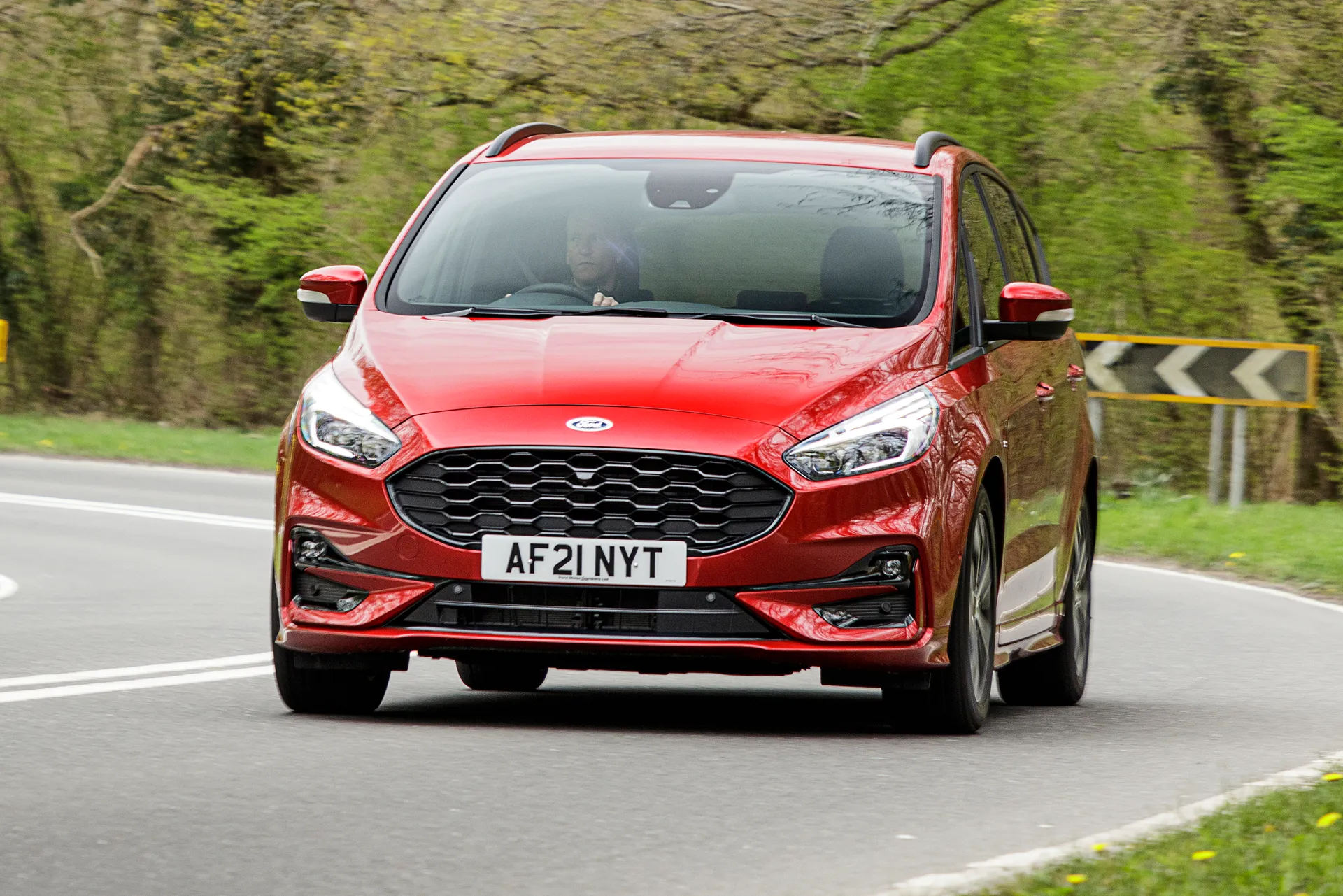
The first-generation Ford S-MAX built a reputation on showing MPVs didn't have to be dull to look at and even duller to drive, with sharp handling and some surprisingly punchy engines.
The later S-MAX couldn't quite live up to the high handling standards set by its predecessor, with Ford adopting a more comfortable stance with the Mk2 S-MAX. This was a sensible move, though, because comfort was arguably more important than precision handling and sharp steering.
The Ford S-MAX was a thoroughly satisfying and pleasant car to drive, feeling more like the smaller C-Max than it did the larger Galaxy. The steering was sharp and accurate, and although it lacked feedback and felt mushy around the straight-ahead, it was not difficult to position an S-MAX on a country road.
Thanks to the low centre of gravity, there wasn't much body roll when cornering, with plenty of grip available, regardless of the model. You’d swear blind you were driving something smaller than an S-MAX – it really was that good. ‘Agile’ and ‘fun’ weren't words we used to describe many seven-seaters back then, but they could be used in the context of the S-MAX.
It wasn't all good news. The ride quality suffered on larger alloy wheels, especially on the 19-inch rims worn by the Vignale model. This felt at odds with a trim level that had been designed with luxury in mind. And while the ST-Line model got more modest wheel options, the stiffer sports suspension made it a little more unsettled on bumpy roads than we would've liked.
All-wheel-drive was available on some of the ST-Line and Vignale petrol and diesel models if you’re after superior all-weather qualities. Ask yourself if you really need it, as all-wheel-drive models cost more to run and are difficult to find on the used market.
What engines and gearboxes are available in the Ford S-MAX?
Diesels were always the engine of choice in the S-MAX, so it was no surprise when Ford ditched petrol as part of the 2019 facelift. The 2.0-litre EcoBlue diesel was excellent, providing a terrific blend of performance and economy, regardless of the output. Unfortunately, no diesel models were available to buy new as of late 2021.
In 150PS diesel guise, the Ford S-MAX accelerated to 62mph in 10.8 seconds, regardless of whether it featured a six-speed manual gearbox or an eight-speed automatic transmission. The top speed was 123mph in the manual gearbox, or 122mph in the automatic. More than enough for the school run.
The manual gearbox wasn't available on the 190PS version, with both the front- and all-wheel-drive cars getting the eight-speed automatic transmission. The front-wheel-drive S-MAX sprinted to 62mph in 9.5 seconds, with the all-wheel-drive version got there a second later. It was the engine of choice if you regularly loaded up the car with passengers and still wanted effortless performance.
The S-MAX launched in 2015 with the option of a 1.5-litre EcoBoost petrol engine, a 2.0-litre EcoBoost unit, and a choice of 2.0-litre Duratorq TDCI engines. A slightly bonkers 2.0-litre EcoBoost with all-wheel-drive and a six-speed automatic transmission arrived soon after. It offered 240PS, to give the S-MAX hot hatchback qualities but also fairly startling thirst.
In 2018, Ford overhauled the engine range, with the 2.0-litre EcoBlue diesel engine replacing the old Duratorq unit. It also saw the arrival of the eight-speed automatic transmission, which was a big step up from the old six-speed auto. It’s for this reason that we’d recommend a S-MAX registered after September 2018.
The automatic transmissions were good, but the six-speed manual gearbox was surprisingly satisfying. It’s still the one to choose if you want to get the best from the S-MAX driving experience.
As of late 2021, the sole engine choice in the S-MAX and Galaxy range was the 2.5-litre petrol hybrid mated to a CVT transmission.
Borrowed from the Mondeo Hybrid, it was better than expected and didn't totally kill the S-MAX's fun-to-drive qualities. 0-60mph took 9.7 seconds, which was perfectly acceptable performance, and the CVT transmission did an okay job at simulating stepped 'gears' when using the paddles. It was also super smooth and efficient around town, where it seamlessly juggled petrol and electric power.
Refinement and noise levels
The Ford S-MAX was remarkably refined with virtually no wind or road noise at motorway speeds. While the Galaxy could feel echoey and cathedral-like on the inside, the S-MAX felt snug and cocooned, without feeling claustrophobic.
Predictably, the Vignale was the most upmarket of the bunch. Noise-cancelling technology and laminated side windows made the flagship model feel a notch or two more refined than lesser versions. The premium leather seats also looked and felt the part, adding an extra layer to the feeling of refinement.
The engine and transmission played a crucial part in this, with the 2.0-litre EcoBlue diesel only sounding vocal when pushing it hard, although this was less of an issue in the 190PS version.
Equally, the eight-speed automatic was smooth and efficient, although it could be a little slow to react to sudden inputs. On the plus side, you could barely notice the shifts through the gears.
The S-MAX hybrid was really refined and smooth once up to speed and cruising, but the engine got a bit vocal when mashing the throttle.
Safety equipment: How safe is the Ford S-MAX?
The Ford S-MAX was awarded a five-star safety rating when it was crash tested by Euro NCAP in 2015. The individual ratings were 87 percent for adult occupant protection, 87 percent for child occupant protection, 79 percent for pedestrian safety, and 71 percent for safety assist systems.
It's worth noting that the test has become significantly stricter since, but the S-MAX should still score pretty well today in terms of its structural strength and crash protection.
All versions had driver and passenger airbags; front side impact airbags; driver’s knee bolster airbag; driver and passenger first, second and third row side curtain airbags; and rear side impact airbags.
All models also had Ford’s Curve Control system, which controlled understeer by reducing engine torque and applying the brakes. There was also active rollover protection across the range, along with three Isofix points on the second row of seats, front and rear parking sensors, pre-collision assist and cruise control.
Lane-keeping assist, traffic sign recognition and LED daytime running lights were standard on all except the Zetec model. Other assistance systems, such as active park assist, blind spot information and adaptive cruise control were optional extras.
Only the Vignale trim had a rear-view camera and adaptive LED headlights as standard.
MPG and fuel costs: What does a Ford S-MAX cost to run?
"If you’re buying a new Ford S-MAX, then the hybrid officially manages 44.1mpg. That figure seemed conservative to us, however, as we managed 50mpg without much effort."
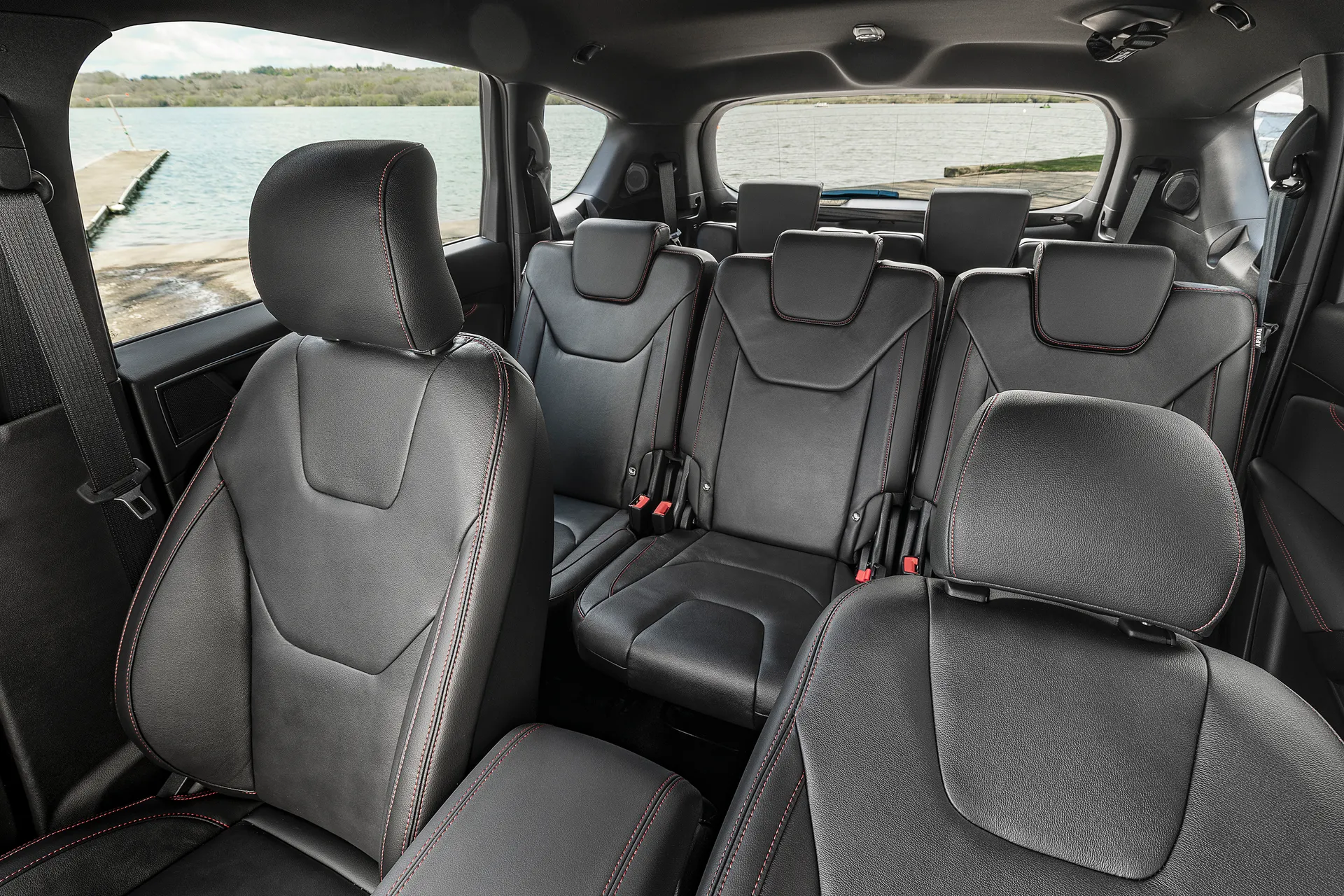
When buying a used Ford S-MAX, the 2.0-litre EcoBlue 150PS with a manual gearbox will be the most economical to run. You can expect to see between 46.3mpg and 47.1mpg, according to the latest WLTP figures. The economy drops to 43.5mpg in front-wheel-drive versions of the S-MAX fitted with an eight-speed automatic transmission. This figure falls to 40.9mpg in an all-wheel-drive S-MAX.
The earlier petrol versions are less economical, but you’ll pay less to fill your tank. Ford quotes figures of 43.5mpg for the 1.5-litre engine, and 35.8mpg for the 240PS 2.0-litre EcoBoost. These figures are based on the old NEDC testing system, which means they are less reliable than the WLTP system. Expect mid-thirties for the smaller engine, and 30mpg at best from the 2.0-litre.
Ford S-MAX reliability and warranty
Ford came 26th out of 33 manufacturers in the latest Honest John Satisfaction Index.
Still, the S-MAX has been around for several years. This means Ford and S-Max owners have had plenty of time to iron out issues. The later hybrid, meanwhile, had a type of system that was proven to rack up hundreds of thousands of miles without issue.
Ford S-Max insurance groups and costs
The insurance groups for the Ford S-MAX range from 16 for a 2.0-litre TDCi Zetec, to 34 for an ST-Line (Lux Pack) 2.0-litre EcoBlue 240PS automatic and Vignale 2.0-litre EcoBlue 240PS automatic. Overall, buying an S-MAX in Zetec trim with a 2.0-litre diesel or 1.5-litre petrol engine will ensure you pay the least amount for insurance cover.
To provide some context, the insurance groups for the Ford Galaxy range from 17 to 31, so the cost of insurance should be roughly the same. The groups for the older Volkswagen Sharan are 15 to 25, so the Volkswagen should be cheaper to insure.
The cheapest S-MAX Titanium in hybrid form is insurance group 21, rising to 22 for the ST-Line and 24 for the Vignale.
VED car tax: What is the annual road tax on a Ford S-MAX?
The S-Max awkwardly straddles two tax systems: post- and pre-2017. Most engines emit between 160-170g/km of c02, meaning tax ranges between £210-255 on pre-2017 cars. Cars registered after April 2017 will default to the £195 flat rate.
Ford S-Max price
"The Ford S-Max has been around for a while, meaning affordable used prices for older cars. 2023 cars still demand top dollar, but these have little to no mileage."
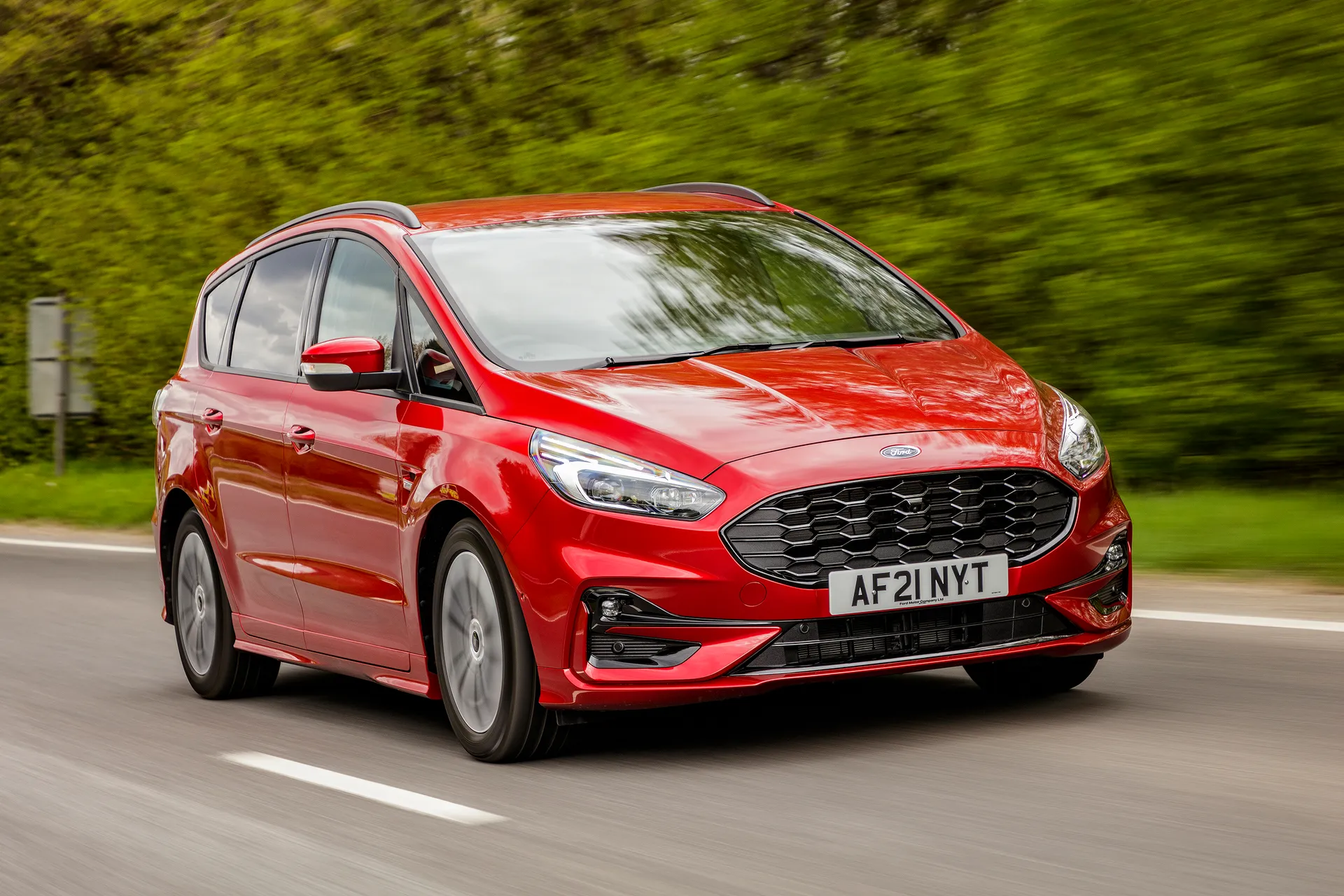
If you're after a cheap family runabout, S-Max' are priced from £1,000 onwards. Most under this amount require TLC and are best avoided unless you want a project.
At the other end are 2023/2024-plate cars with anywhere between 6,500 to 10,000 miles on the clock. We spotted an ex-demo 2024-plate hybrid with 9,000 miles for £35,000.
For circa £20,000, a 2021 28,000-mile 2.0-litre EcoBlue can be had.
Trim levels and standard equipment
The entry-level Zetec trim was arguably the S-MAX range sweet spot. Standard equipment included 17-inch alloy wheels, an eight-inch colour touchscreen infotainment system, front and rear parking sensors, cruise control, dual-zone climate control, automatic wipers and three Isofix points.
Upgrading to Titanium added front LED fog lights, LED daytime running lights, automatic headlights with auto high beam, rear privacy glass, silver roof rails, satellite navigation, keyless start and go, interior ambient lighting and a 10.1-inch semi-digital instrument cluster.
The ST-Line was the sportiest trim level and boasted 18-inch alloy wheels, LED rear lights, body kit, rear spoiler, red brake calipers, sports suspension, black roof rails, leather-trimmed steering wheel, heated steering wheel, electric adjustable seats and a host of ST-Line cosmetic upgrades.
Finally, the Vignale had 19-inch alloys, adaptive LED headlights, rear-view camera, electric tailgate, Sony audio system, premium leather trim, climate controlled front seats with massage function, active noise control, enhanced ambient lighting and a host of Vignale exterior and interior upgrades.
Ask the heycar experts: common questions
What's bigger: the Ford S-MAX or the Galaxy?
Is the Ford S-MAX a good car?
Has Ford stopped making the S-MAX?
Get our latest advice, news and offers
Keep me updated by email with the latest advice, news and offers from heycar.
By submitting you agree to our privacy policy
